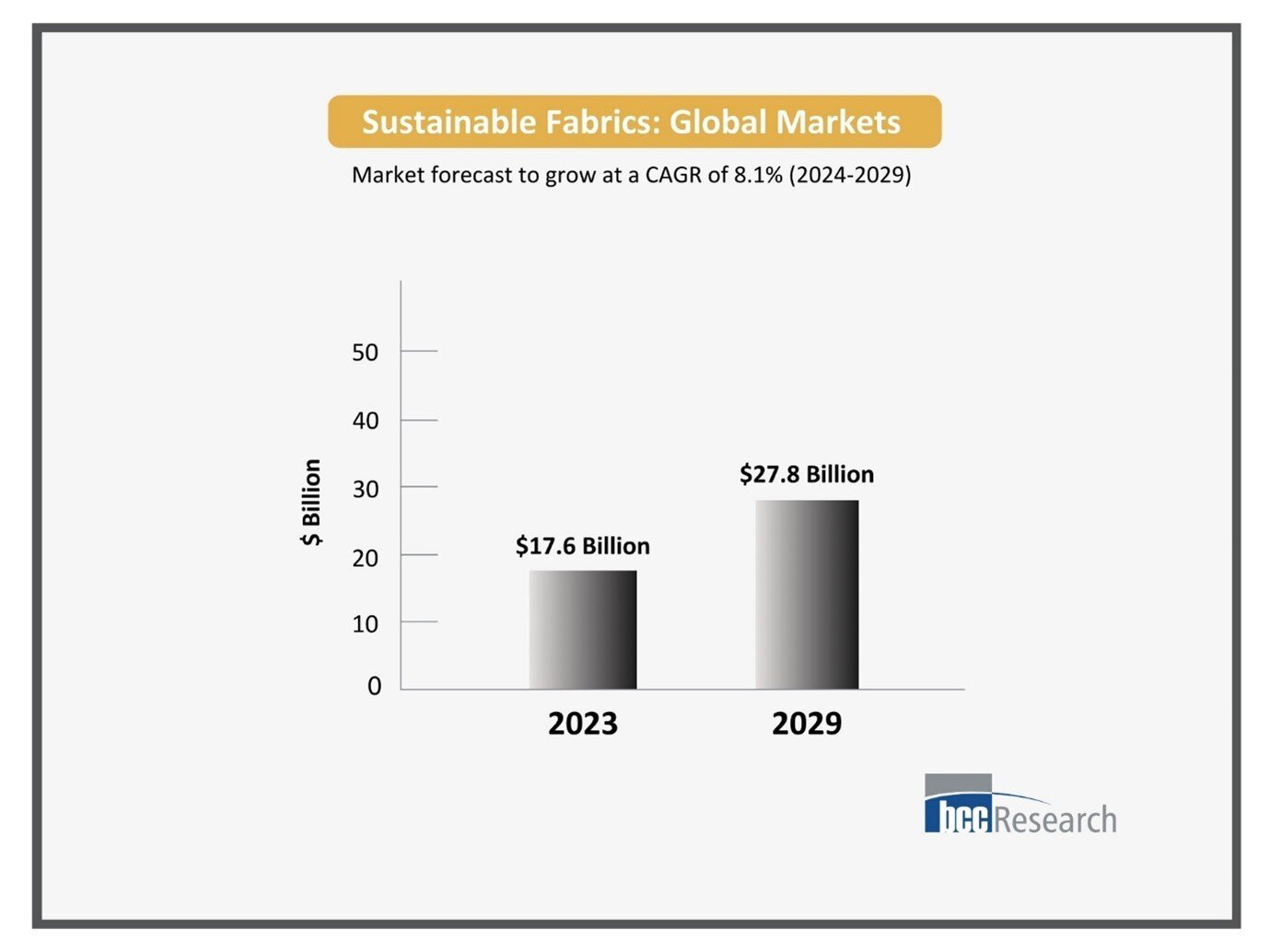
Nov 8, 2024
The textile industry is transforming significantly as the world becomes increasingly aware of environmental issues. Sustainable fabrics are at the forefront of this change, offering a promising solution to reduce the industry’s environmental footprint. This blog explores sustainable fabrics' global market growth, innovations, and future prospects.
The global Sustainable Fabrics Market was valued at $17.6 billion in 2023. It is expected to grow at a compound annual growth rate (CAGR) of 8.1%, reaching $27.8 billion by 2029. This growth is driven by increasing environmental concerns, rising demand for eco-friendly products, and advancements in sustainable textile technologies.

The demand for sustainable fabrics is growing rapidly as consumers become more conscious of their environmental impact. Several factors drive this shift, including increased awareness of climate change, the depletion of natural resources, and the negative effects of traditional textile production on the environment. As a result, consumers and manufacturers seek eco-friendly and ethically produced alternatives.
This report provides an overview of the global sustainable fabrics market and a detailed analysis of the market player’s products and strategies. It presents analyses of the global market based on material type, application and region. Using 2023 as the base year, the report provides market estimates for 2024 through 2029.
Future Prospects
The future of sustainable fabrics looks promising as the industry continues to innovate and adapt to changing consumer preferences and regulatory requirements. Collaboration between brands, manufacturers, and governments will be crucial in driving the adoption of sustainable practices and technologies.
Consumers' making informed choices about the fabrics they buy and use is a powerful way to support this shift. Consumers can contribute to a healthier planet and a more sustainable future for the textile industry by opting for sustainable fabrics.
Conclusion
The sustainable fabrics represent the future of fabric production. As the textile industry evolves, prioritizing sustainability will become increasingly crucial. The industry can significantly reduce its environmental impact and contribute to a more sustainable future by adopting eco-friendly materials, innovative production techniques, and ethical practices. For consumers, making mindful choices about the fabrics they purchase and use is a powerful way to support this transition and ensure a healthier planet for future generations.
Consider becoming a member of the BCC Research library and gain access to our full catalog of market research reports in your industry. Not seeing what you are looking for? We offer custom solutions too, including our new product line: Custom Intelligence Services.
Contact us today to find out more.

Kavita Rawat is a Marketing Operations Executive at BCC Research, with a master’s degree in business. She specializes in optimizing marketing strategies and content creation. With her MBA, she combines her passion for marketing with her academic prowess to drive success in the ever-evolving field.

Biophotonics: Technologies and Global Markets (PHO024B)

Global Trade: A Strategic Shift The global trade environment is undergoing a dra...

The global demand for cutting-edge materials continues to rise, and at the foref...

We are your trusted research partner, providing actionable insights and custom consulting across life sciences, advanced materials, and technology. Allow BCC Research to nurture your smartest business decisions today, tomorrow, and beyond.
Contact UsBCC Research provides objective, unbiased measurement and assessment of market opportunities with detailed market research reports. Our experienced industry analysts assess growth opportunities, market sizing, technologies, applications, supply chains and companies with the singular goal of helping you make informed business decisions, free of noise and hype.